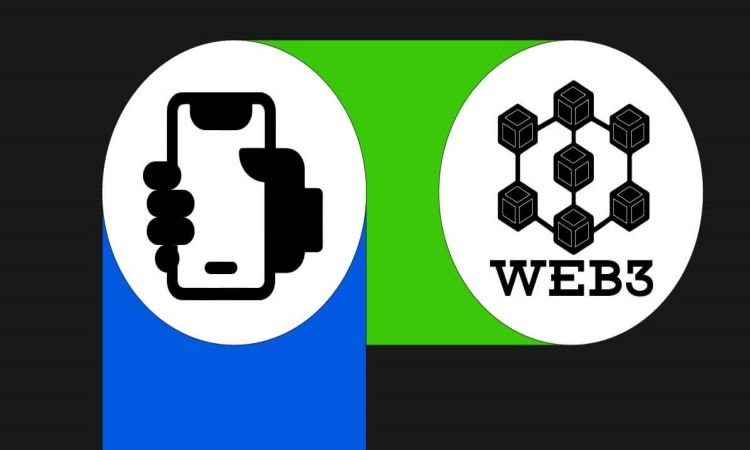 Web 3.0″, also known as “Web 3”, denotes the innovative, user-centric phase of the internet that incorporates advanced concepts such as blockchain, decentralization, augmented reality (AR), virtual reality (VR), and artificial intelligence (AI). It strives to enhance monetization, limit susceptibility to data manipulation, and provide users with more control over their data usage and sharing in a decentralized internet environment. Web3 is not designed to entirely replace the existing internet, but rather to integrate these technologies into the current system, allowing unrestricted internet access to everyone.
Web 3.0″, also known as “Web 3”, denotes the innovative, user-centric phase of the internet that incorporates advanced concepts such as blockchain, decentralization, augmented reality (AR), virtual reality (VR), and artificial intelligence (AI). It strives to enhance monetization, limit susceptibility to data manipulation, and provide users with more control over their data usage and sharing in a decentralized internet environment. Web3 is not designed to entirely replace the existing internet, but rather to integrate these technologies into the current system, allowing unrestricted internet access to everyone.
In recent times, much has been discussed about Web3 and the investment opportunities it offers. The term ‘Web3 investment’ has gained industry popularity, yet many people remain unclear about its importance and how they can actively or passively invest in Web 3.0. Examples of active investment options include Cryptocurrencies and NFTs, whereas investing in the stocks of companies actively involved in Web 3.0 development presents an alternative investment route.
To grasp the idea of ‘Web3’, let’s briefly review the Internet’s evolution and define Web1, Web2, and Web3.
Web1 relates to the internet’s initial phase when many businesses and content creators started developing their websites to connect with a global clientele. However, the vast amount of content made it challenging for consumers to find relevant services, products, and content.
Web2 saw the advent of major aggregation platforms like Google, YouTube, Facebook, and Instagram, which aided users in easily locating relevant content amidst the internet’s clutter. Yet, while businesses and creators expanded their reach through Web2, they often lost control over their data, becoming highly dependent on these aggregator platforms. Any sudden change in algorithms or unexplained bans could lead to significant revenue loss.
Web3 foretells a future where businesses and content creators can reach global audiences while retaining data control. Instead of depending on aggregation platforms for audience generation, producers can leverage the blockchain to directly access and monetize their audiences and potential clients.
There are various strategies for investing in Web 3.0, either passively or actively. Passive investments involve holding onto your virtual assets for an indefinite period, allowing them to accrue value. Active investments position you to contribute to Web3’s development.
Transactions in Web3 are expected to be powered by blockchains that support decentralized protocols and NFTs. Consequently, many Web3 enthusiasts invest in cryptocurrencies that enable these blockchains’ functioning. Cryptocurrencies serve as flexible digital assets, acting as both exchange mediums and value stores. Investing in cryptocurrencies such as Bitcoin, Ethereum, Solana, Litecoin, among others, can offer a great avenue for passive income generation and inflation hedging. Also, while not a direct investment, you could significantly profit from cryptocurrency mining.
If you’re financially capable, consider investing in Web3 projects. The stock market provides a medium to do this, though there are no ‘pure’ Web3 companies listed on public exchanges. Instead, investors must choose companies that are exploring Web technologies along with their main business model. These projects focus on blockchain, metaverse, virtual reality, artificial intelligence, machine learning, and cybersecurity and could surge in importance as blockchain technology becomes mainstream.
NFTs are another vital part of Web3, offering early exposure to Web3’s rise. NFTs are digital assets created on the blockchain network, similar to crypto tokens like Bitcoin and Ethereum, but they are non-fungible. An NFT represents ownership of a specific item and cannot be duplicated.
Decentralized Finance or DeFi should also be considered when looking at Web3.0 investments. The fundamental principle behind DeFi is finance decentralization, meaning consumers should be able to access basic financial services without a centralized operator. Presently, some centralized organizations are beginning to explore decentralization’s potential. For instance, Phemex is constructing its decentralized Web3 world, Phemexia, which merges the benefits of both decentralized and centralized crypto exchanges to achieve a new level of transparency.
In conclusion, Web3 aims to elevate the current state of the internet. This means that in the foreseeable future, the internet will not only offer rapid capacity and enhanced connectivity but also an innovative way of carrying out daily tasks.
When considering investing in Web3, it is crucial to evaluate whether this sector can yield substantial returns over time. It’s important to bear in mind that Web3 is currently a conceptual framework that brings together various emerging technologies. Always conduct thorough research before making any investment decisions and choose a reliable Web3 partner.




